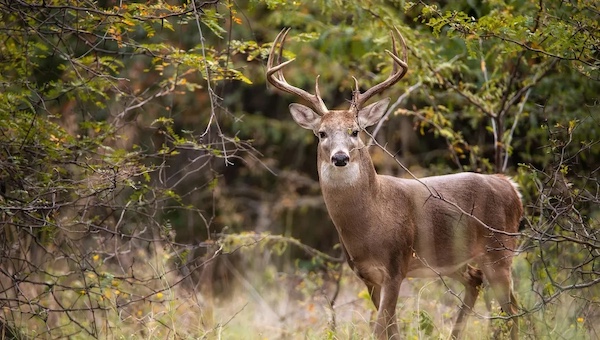
A WHITE-TAILED DEER - LEEKRIS/ISTOCK
ZOMBIE DEER DISEASE THREAT ESCALATES OVER HUMAN INFECTION RISK
BY: ABDUL-RAHMAN OLADIMEJI BELLOORIGINAL SITE: INTERESTING ENGINEERING
Chronic Wasting Disease (CWD) strikes Yellowstone, raising alarm as scientists fear the possibility of a jump to humans.
Chronic Wasting Disease (CWD), a fatal prion disease affecting wildlife, has breached the heart of Yellowstone National Park. According to the Guardian, there are triggering concerns about potential implications for human health.
With its name 'Zombie Deer Disease,' this disease threatens not only the park's ecology but also raises alarms of a species barrier breach, echoing fears reminiscent of the 'mad cow disease' outbreak. Amidst these concerns, experts emphasize the urgent need for vigilance and preventive measures.
Originating from a mule deer buck's death in the park, this ailment, caused by prions—abnormal transmissible agents—has stealthily traversed North America, capturing attention for its impact on wildlife.
Related
Describing the disease's impact on hosts' brains and nervous systems, leaving animals drooling, emaciated, and exhibiting a haunting "blank stare," experts liken it to a grim narrative of 'zombie deer disease.' However, its implications stretch beyond wildlife behavior, stirring fears of a potential leap across species barriers to humans.
Dr. Thomas Roffe, a former chief of animal health for the US Fish & Wildlife Service, underscores the ecological ramifications, signaling a critical wake-up call for public attention. Yellowstone, home to a rich diversity of wild mammals, is now a laboratory for observing CWD's havoc within an intact ecosystem.
Dr. Michael Osterholm, an epidemiologist renowned for his study of 'mad cow disease,' called CWD a "slow-moving disaster." Its relentless spread, characterized by fatal, incurable, and highly contagious traits, raises concerns over eradication challenges, both in infected animals and contaminated environments.
The risk of species barrier cross.
While CWD primarily affects cervids—deer, elk, moose—the specter of a species barrier breach looms large. Dr. Cory Anderson, an expert in CWD transmission pathways, emphasizes the absence of a "spillover" case as no guarantee against potential future risks, citing parallels to the 'mad cow' outbreak in Britain.
Dr. Raina Plowright, a disease ecologist, contextualizes CWD within a broader global context of zoonotic pathogens transcending species barriers. As human settlements encroach upon wildlife habitats, the risk of contact with disease-carrying animals escalates, heightening concerns over potential outbreaks.
With hunting season underway, authorities urge rigorous testing of game animals for disease. Yet, the Alliance for Public Wildlife's estimation of thousands of unwittingly consumed infected animals annually casts a shadow over public health.
The CDC underscores potential risks, noting animal studies suggesting a threat to non-human primates. The implications are dire—since 1997, the World Health Organization has advocated for stringent measures to prevent prion diseases from entering the human food chain.
As the 'zombie deer disease' infiltrates Yellowstone's wilderness, the stakes are high, urging a collective and vigilant response to mitigate ecological and potential human health risks.
AWFSM CATEGORIES
Activism | AI | Belief | Big Pharma | Conspiracy | Cult | Culture | Deep State | Economy | Education | Entertainment | Environment | Faith | Global | Government | Health | Hi Tech | Leadership | Politics | Prophecy | Science | Security | Social Climate | Universe | War
